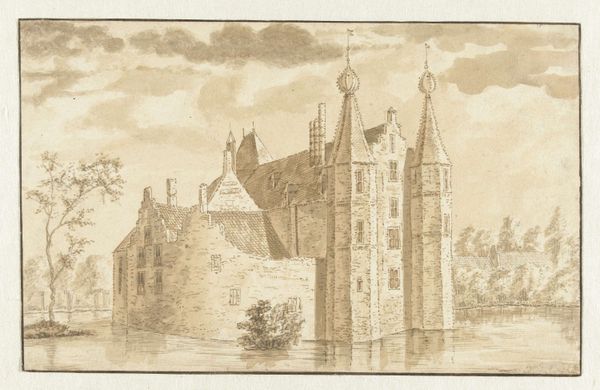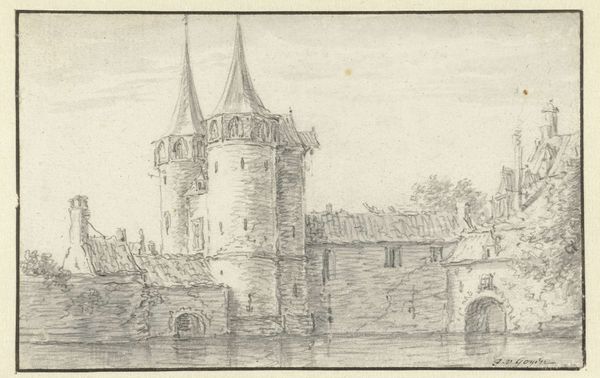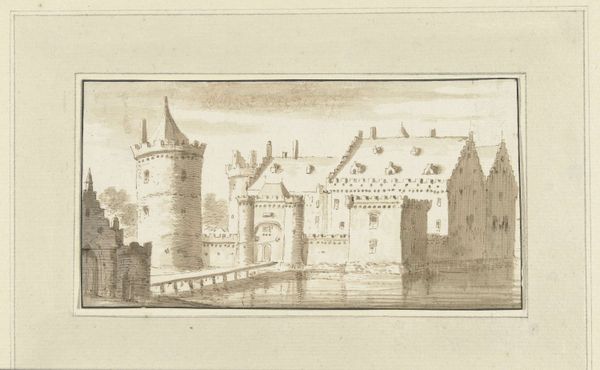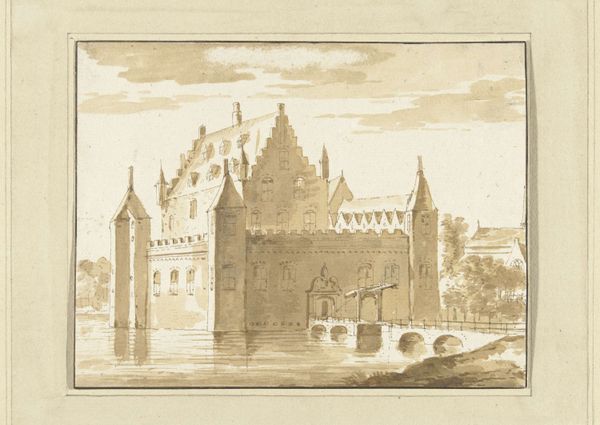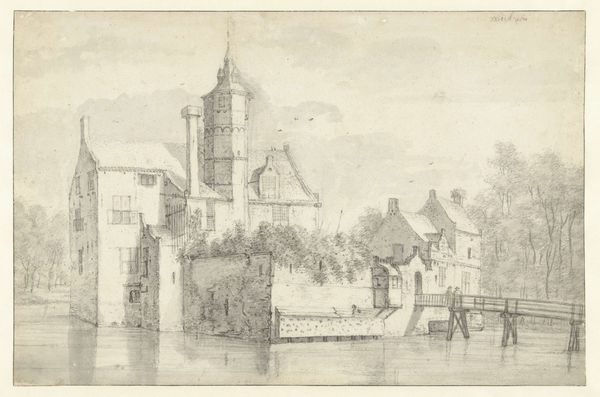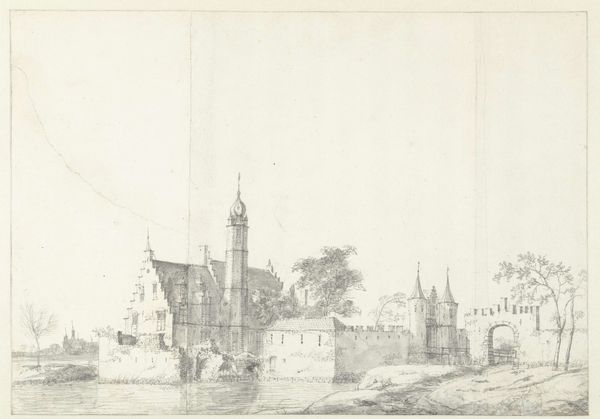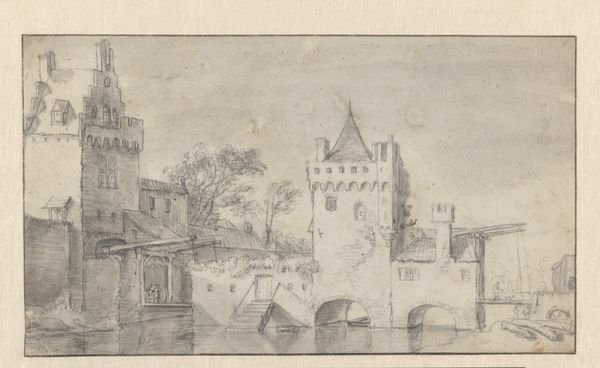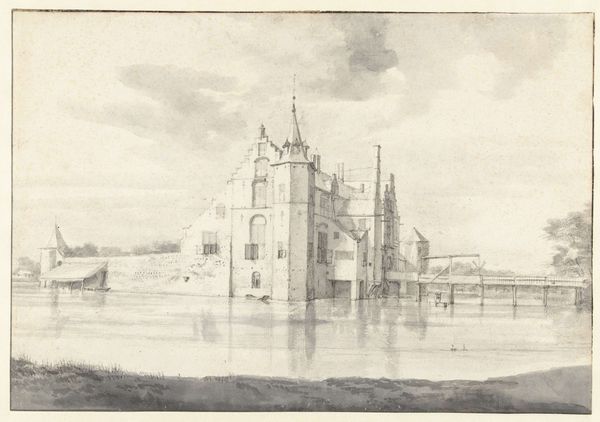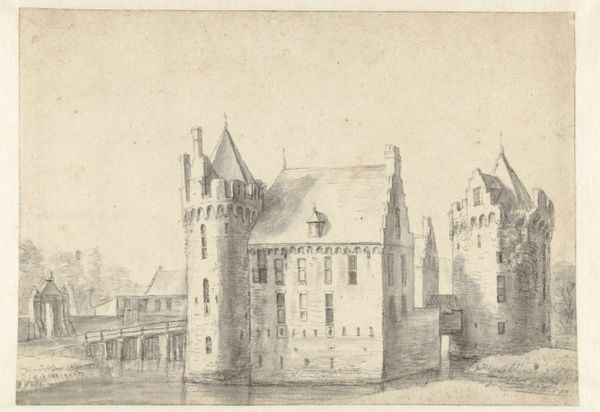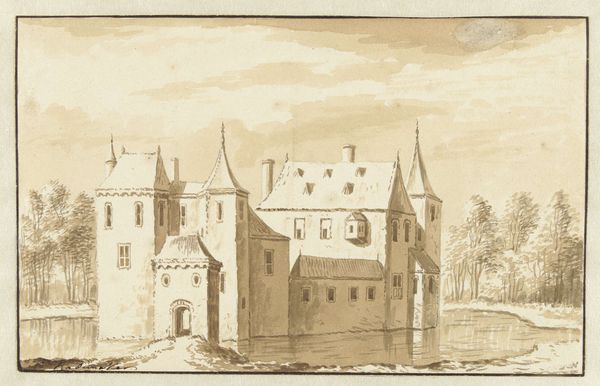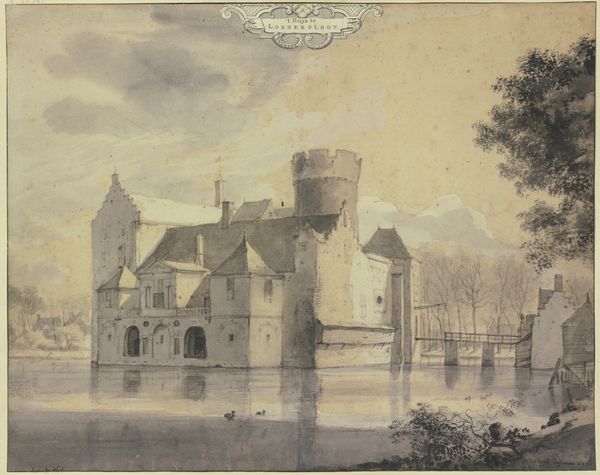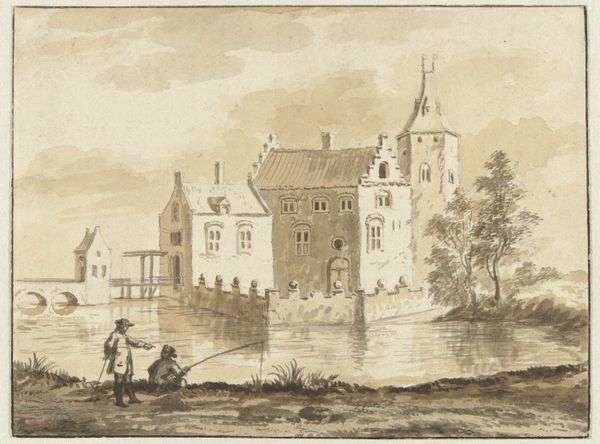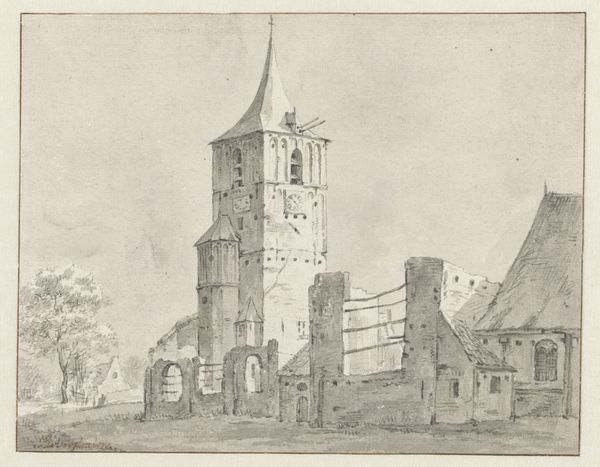
drawing, paper, ink
#
drawing
#
baroque
#
landscape
#
paper
#
ink
#
cityscape
Dimensions: height 161 mm, width 255 mm
Copyright: Rijks Museum: Open Domain
Curator: Abraham Rademaker created this drawing, titled "Gezicht op het Huis Zuilen bij Maarssen," sometime between 1685 and 1735. It’s currently held in the Rijksmuseum. Editor: It's lovely—a serene cityscape with what looks like a medieval castle as its focal point. The monochromatic wash gives it a dreamlike quality, almost as if the building is emerging from the mist. Curator: The "Huis Zuilen" was, and in its later form, still is, a castle of considerable local importance near Maarssen. These types of images were frequently commissioned as symbols of power and lineage. Who lived there, how they wielded influence, and who was kept out, is an important consideration in approaching Rademaker's work. Editor: I see it in the precision of the rendering, particularly in the architectural details of the facade. Rademaker masterfully uses line and shading to define the planes and volume of the building; observe the light gently catching the turret. The reflection on the water mirrors the details almost perfectly—a beautiful symmetry! Curator: It’s interesting you point that out, given that these types of depictions frequently functioned as carefully constructed fantasies—they said more about the family and its aspirations than the actual state of the building or the surrounding landscape. So, where does "reality" begin and end in this drawing? How complicit is Rademaker? Editor: That adds another layer, doesn't it? To see beyond the immediate visual pleasure to consider how the artwork itself actively shapes the perception and perpetuates a particular narrative of a place. The technique does reinforce this "fantasy"—the way he blurs the background, pushing it back in space, emphasizes the castle's grandeur even further. Curator: Indeed. It’s this intersection of artistic skill, patronage, and societal context that truly brings the piece to life for me, allowing us to look not just at the aesthetic surface, but the socio-political environment embedded within. Editor: Precisely—it's remarkable how seemingly straightforward landscape drawing can be so rich in interpretive possibilities once you begin examining its structure, composition and technique. I hadn't quite considered its political dimensions so acutely.
Comments
No comments
Be the first to comment and join the conversation on the ultimate creative platform.
